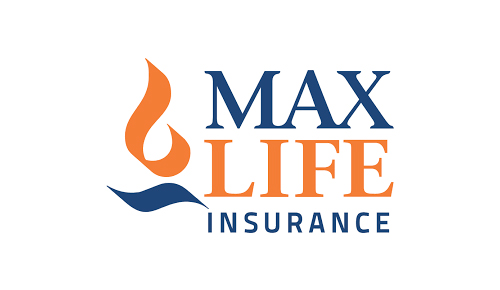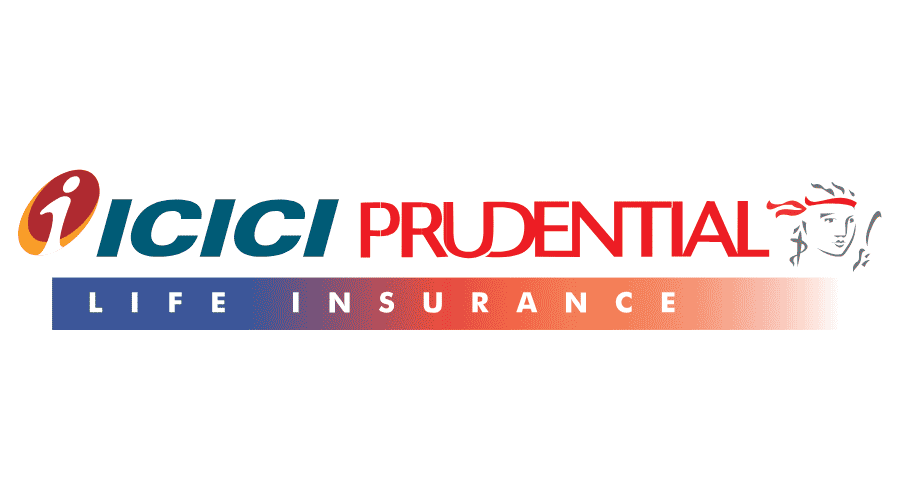Whole Life Insurance Life Insurance Protection+Guaranteed Cash Value Accumulation + Liquidity and Tax Benefit
Whole life insurance is a robust and enduring financial tool that goes beyond conventional life insurance. Offering lifetime coverage, it blends a death benefit with a cash value component, providing both security for loved ones and a means of accumulating wealth over time. Unlike term life insurance, which has a predetermined duration, whole life insurance is a permanent solution designed to last throughout the insured’s lifetime.
- Life-Long Coverage till the age 99-100yrs
- Wealth Creation of Family
- Cash Value components in some plans
-
Enhance Your Protection with Optional
Riders
Lifetime Coverage till 99 Years of Age-Lead Form
What is Whole Life Insurance?
A Whole Life Insurance plan is a specific kind of insurance contract that offers financial protection for the policyholder's entire lifetime. The insurance will remain in effect until the policyholder pays premiums. The policy pays a certain amount to the nominee in case the insured person dies byI safeguarding the financial interests of your family in your absence.Moreover, it allows the policyholder to borrow a loan against the policy or withdraw their policy. The standard maturity age of this type of policy is 100 years. In case, the insured person lives post-policy maturity, it turns into a matured endowment, offering a tax-free death benefit this type.
| Benefit | How it Works |
|---|---|
| Death Benefit | If you don't survive the policy term, your nominee will be eligible to receive the sum assured as the death benefit. |
| Maturity Benefit | If you survive the policy term, you will be eligible to receive a maturity benefit. It can be the sum assured, the survival benefit as regular payouts, or a total lump sum of the payouts. |
| Survival Benefit | Depending on your insurer and product, you may receive regular payments at specified intervals, They can be either a percentage of the sum assured or a percentage of the annual premium you have paid. |
Need and Importance of Whole Life Plan
Lifespans are increasing. On the other hand, unexpected events and other natural disasters have proven that it is increasingly important for people to plan for their long-term future. Below are few reasons that makes it important to get covered for whole life;
Long-Term Financial Protection
Whole life insurance is vital for those seeking enduring financial protection, ensuring that loved ones are covered regardless of when the insured passes away.
Cash Value Accumulation
The policy's cash value serves as a versatile financial asset, offering liquidity for various needs, from educational expenses to supplemental retirement income.
Accomplish Your Financial Goals
We all have some goals in life, for which money needs to be saved. It plays a crucial role in creating a corpus and helps us in achieving financial goals and facilitating effective planning.
Guaranteed Payout
The policy guarantees a death benefit payout, providing certainty to beneficiaries and a reliable financial cushion.This brings Peace of Mind and helps leads lead a stress free life
Diversification of Financial Portfolio
Whole life insurance adds a stable and conservative element to an individual's financial portfolio, balancing risk and stability.
Flexible Usage of Cash Value
Policyholders can access the cash value through loans or withdrawals, providing flexibility in addressing financial challenges.
Types of Whole Life Insurance Plans
Depending on the premium pricing and the policy risk allocation, Whole life insurance can be categorised into the following types:
Level Premium Whole Life Insurance Policies
Premiums remain unchanged throughout the duration of the policy. This is the most common type of payment plan.
Single Premium Whole Life Insurance Policies
In single premium whole life insurance, you pay the premium in a lump sum as a one-time payment at the time of purchase. Your coverage remains constant for the entire policy term and the nominee enjoys uninterrupted financial protection
Limited Payment Whole Life Insurance
If you select a limited payment option, you need to pay the policy premium for a limited period during the policy term. In most cases, you can pay the premium for the first 10 or 20 years and continue to enjoy policy coverage for a lifetime.
Variable Whole Life Insurance
A variable whole life insurance policy offers life cover for the entire policy term, protecting your loved ones in your absence .It also helps you meet your investment goals by investing your money. You can invest in this plan to enjoy tax benefits, build savings, and ensure financial protection for your loved ones.
Joint Whole Life Insurance
A joint whole life term insurance covers two people instead of one. The premium is paid for both policy owners, and the sum assured is offered for both lives. The insurance payout is given on a first-death basis. These types of plans are suitable for couples planning to save for the financial needs of their children in their absence.
Eligibility Criteria to Buy a Whole Life Plan
To invest in an whole life insurance policy, there are some essential eligibility criteria and restrictions that an individual needs to meet. Below are the details for same;
| Eligibility Criteria | Specifications |
|---|---|
| Age at Entry | Min18 years /Max 65 years |
| Age at Maturity | 99 years |
| Policy Term | Ranging from 15 years to 20 years depending on the product |
| Premium Payment Frequency | Yearly/ Half-yearly/ Monthly/ One-time |
Key Benefits of Whole Life Plan
In this fast-paced world, we all need the simplest and smartest solution to meet the needs of our near and dear ones. Whole Life plan is one such solution which ensures that you meet all of them and that your absence does not make your loved ones feel dependent and vulnerable .Below are some important benefits of buying this plan;
Lifetime Coverage
Ensures coverage for the entire duration of the insured's life, offering enduring protection.
Cash Value Growth
The policy's cash value grows over time, serving as a living benefit that can be utilised during the policyholder's lifetime.
Death Benefit Guarantee
Guarantees a tax-free death benefit payout to beneficiaries, providing financial support when it is needed the most.
Fixed Premiums
Premiums remain constant throughout the policyholder's life, allowing for predictability in financial planning.
Savings and Investment
In addition to life cover,Whole Life Insurance policies come with savings and investment components. These policies typically offer a fixed rate of return, making them a great option for individuals who want to invest their money safely and securely.
Dividend Payments
Some whole life policies may pay dividends, enhancing the policy's cash value and death benefit.
Loan Accessibility
Policyholders can borrow against the cash value for various financial needs, offering a valuable source of funds.
Financial Security
Beyond the death benefit, whole life insurance provides a level of financial security, knowing that loved ones are protected.
Tax Benefits
Whole life insurance may provide tax advantages, with the death benefit typically being tax-free for beneficiaries, contributing to efficient estate planning.
Our Preferred Plan
Preferred plans may provide tailored coverage options based on individual health profiles, offering a more personalised and comprehensive insurance solution.

Smart Wealth Plan
- Advantage with Max Life
- Claim settlement Ratio: 99.51%
- Rs 122857 Cr of assets under management as on FY 22-23
- Max Life’s presence in 296 offices
Coverage Benefits
- 100% Guaranteed returns
- Guaranteed 'income benefit' is payable at the end of the period
- Income payout option available
- Optional Riders

ICICI Pru Gold
- Advantage ICICI Prudential
- Claim settlement Ratio: 98.14%
- Crossed `2.5 trillion of assets under management as on FY 22-23
- 24X7 assistance with their Mobile App
Coverage Benefits
- Life coverage up to 99 years of age
- Income up to 99 years of age
- Guaranteed boosters after every 5 years
- Accumulate/withdraw income any time

Sampoorn Samridhi Plus
- Advantage with HDFC
- Claim settlement Ratio: 99.39 %
- Rs 238782 Cr of assets under management as on FY 22-23
- HDFC Life’s presence is in 498 branches across India
Coverage Benefits
- Cover up to 100 years of age
- 2 Key elements of savings and protection
- Choice of 2 plan options
- Guaranteed Additions2 + Bonuses (if declared)
- Loan facility available

Long Life Goals
- Advantage with Bajaj Allianz
- Claim settlement Ratio: 99.04%
- Rs 1,04,493 Crore of assets under management as on FY 22-23
- Bajaj Life’s presence is in 510 branches across India
Coverage Benefits
- Retired Life Income
- Whole of Life Insurance Cover
- Loyalty additions
- Periodical Return of Life Cover charges ULIP

Kotak Premier Life Plan
- Advantage with Kotak E term
- Claim settlement Ratio: 98.82%
- Covered 50 million lives nationwide as on 2023
- 24X7 assistance with their Mobile App
Coverage Benefits
- Cover up to 100 years of age
- Avail survival & maturity benefit
- Receive bonus payouts or accumulate it
- Enhance protection through riders
Inclusion and Exclusions in Whole Life Plan
The inclusion under Whole Life insurance plans may differ from one policy to another. The exclusions under all life insurance plans may differ from one policy to another. However, there are certain exclusions that almost all policies agree with. Below are some important inclusions and exclusions.
Death Benefits
It offers an assured lifetime death benefit in case of an untimely death of the life assured during the policy term, the nominee will receive a death benefit, which will help your financial dependents to fulfill their daily needs and life goals.
Maturity Benefit
Whole Life policies offer maturity benefits if the policyholder survives till the end of policy term. A lump sum amount is given to the policyholder as a maturity benefit at the end of the policy tenure
Rider Benefit as opted
Most of the life insurance companies offer multiple riders like Accidental Death Benefit, Accidental Total and Permanent Disability, Critical Illness Rider etc that you can attach with your vanilla policy to enhance its coverage.
Guaranteed Additions as per plan
There are some plans under which provide guaranteed additions. This additional amount enhances the overall returns in the policy by providing an additional lump sum benefit, which increases the total payout at maturity or in the event of the policyholder's death.
Act of Suicide
Any accident or Death due to suicide or any self-inflicted injury will not be covered
Intoxication
The insurer is not obligated to compensate the beneficiaries if the death of the life insured if the policyholder dies under the influence of alcohol or drugs
War or terrorism
Life insurance policies do not cover risks which are beyond their control, If the policyholder dies due to an act of war or terrorism, the life Insurance policy may not cover it.
Criminal activities
Life insurance policies do not cover risks associated with illegal activities, Death caused while performing any criminal or unlawful activities shall not get covered
Participation in High-risk activities
Death caused while participating in adventure sports or any dangerous activities like bungee jumping, rock climbing, etc. shall not be covered
Non-disclosure or Misrepresentation of Material Fact
If you hide an important fact from the insurance company at the time of buying the policy and death occurs due to such a hidden fact, the company can reject your claims. In that case, the policy would become null and void and no claim would be paid
Sexually Transmitted Disease
If the insured's death is caused by STDs (Sexually Transmitted Diseases) such as AIDS, HIV, or other sexually transmitted diseases, the insurance provider will deny any claim for the same
Waiting period
Death caused during the waiting period is not covered by life insurance policies basis the plan and riders opted
Different Time Periods You Should Know About in Insurance
1. Premium Payment Term (PPT): It is term for payment of premiums and it depends on the plan chosen.
2. Free Look Period: The free look period in life insurance is usually 15 to 30 days from the date of delivery of policy document, depending on the channel through which you have purchased the policy.
3. Grace Period: The insurance grace period is 15-30 days for policies basis the premium payment options like monthly, quarterly , yearly.
4. Revival Period: A revival period refers to the time band allowed by the insurance company to recover a lapsed policy starting from the due date of the first unpaid premium. Typically, this period ranges between 2-5 years and varies across insurers.
FAQ's
As the need for insurance increases, doubts and queries also increase. Navigating insurance complexities can be overwhelming.To help you with this, We have tried to address common doubts for a seamless journey with Bimasure;
Whole life insurance is a type of life insurance policy that provides coverage for your entire lifetime (up to age 100), as long as you keep paying the premiums. It offers two main benefits:
- Death Benefit: This is a guaranteed sum of money paid to your beneficiary if you die during the policy term.
- Cash Value: This is a savings component that builds up over time. You can access this cash value through loans or withdrawals.
A portion of your premium goes towards building the cash value. This cash value typically grows at a guaranteed minimum interest rate set by the insurance company.
- Guaranteed Death Benefit: Your beneficiaries will receive a payout regardless of when you die within the policy term.
- Cash Value Accumulation: Provides a source of savings that you can access through loans or withdrawals.
- Tax Advantages: In some cases, the cash value may grow tax-deferred and withdrawals up to the amount you’ve paid in premiums may be tax-free.
- Higher Premiums: Whole life insurance premiums are typically higher than term life insurance premiums because of the cash value component.
- Lower Returns: The guaranteed interest rate on the cash value is usually lower than what you might earn in other investments.
- Less Flexibility: Accessing the cash value through loans or withdrawals can reduce your death benefit and may come with tax implications.
Riders are optional add-ons that can be attached to your whole life policy to customize your coverage. Here are some common riders:
- Accidental Death Benefit: Pays an additional benefit if you die from an accident.
- Disability Income Rider: Provides income if you become disabled and are unable to work.
- Waiver of Premium Rider: Waives your future premiums if you become disabled.
- Guaranteed Insurability Rider: Allows you to purchase additional coverage in the future without having to take a medical exam, regardless of any changes to your health.
Whole life insurance premiums are typically based on several factors, including:
- Your Age: Younger applicants generally pay lower premiums than older applicants.
- Your Health: People with better health typically qualify for lower premiums.
- The Death Benefit Amount: The higher the death benefit, the higher the premium.
- The Policy Term: A longer policy term may have a slightly higher premium.
If you stop paying premiums on your whole life insurance, there are typically a few options depending on the policy and the amount of cash value accumulated:
- Grace Period: Most policies have a grace period (usually 30-60 days) after a missed premium payment where you can reinstate the policy by paying the missed premium(s) and any applicable fees.
- Policy Loan: You may be able to use your cash value to pay the premiums. However, this will reduce your death benefit and accrue interest on the loan.
- Reduced Paid-up Insurance: If enough cash value has accumulated, the policy might convert to a paid-up policy with a reduced death benefit that continues without further premium payments.
- Cash Surrender Value: You can surrender the policy for its cash value, which may be less than the total premiums you’ve paid.
- Cash Value Growth: Generally grows tax-deferred. You won’t pay taxes on the earnings until you withdraw the money.
- Withdrawals: Withdrawals up to the amount you’ve paid in premiums are typically tax-free. However, withdrawals exceeding your basis (premiums paid) may be taxed as income.
- Death Benefit: The death benefit paid to your beneficiary is generally not taxable.
It’s important to consult with a tax advisor for specific details on how whole life insurance might impact your tax situation.
When comparing whole life insurance policies, consider factors like:
- Death Benefit Amount: How much coverage do you need?
- Premium Cost: Can you afford the premiums?
- Cash Value Growth Rate: How quickly will the cash value accumulate?
- Rider Options: Are there riders available that meet your needs?
- Financial Strength of the Insurance Company: Look for a company with a strong financial rating.
Yes, there are other life insurance options available, such as:
- Term Life Insurance: Provides coverage for a specific period (term) at a lower premium cost than whole life insurance.
- Universal Life Insurance (ULIP): Offers flexible premiums and death benefit options, with the cash value linked to the performance of the underlying investments.
Consider your individual needs and financial goals when deciding if whole life insurance is the right choice for you.

